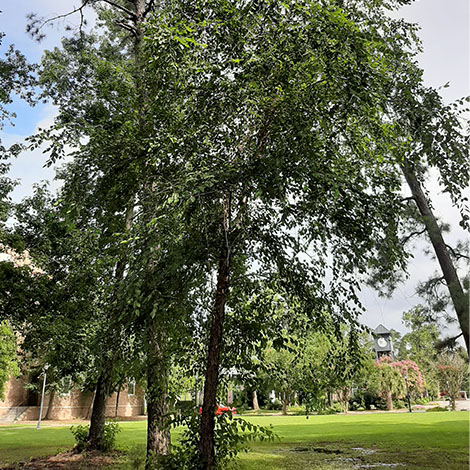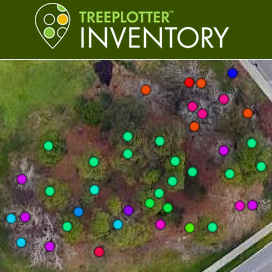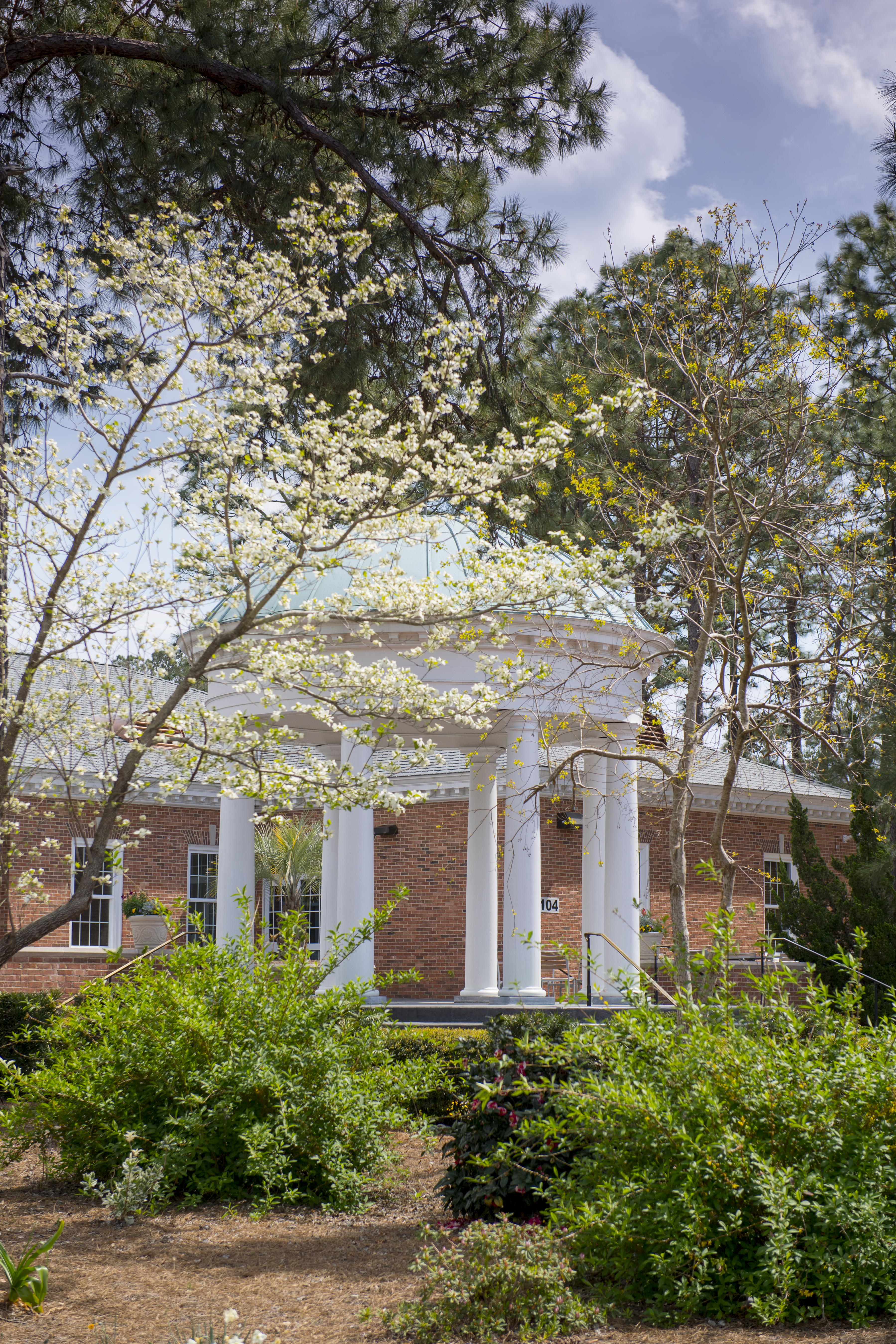CCU Arboretum
Bald Cypress
Common Name: Bald Cypress
Scientific Name: Taxodium distichum
Species Range: Bald cypress is a deciduous conifer native to the southeastern United States. The species is typically concentrated in swampy or moist soil areas, but it is adaptable to various environments including sandy, dry, or clay soil zones. The bald cypress has been found as far north as Wisconsin and Maryland, and as far west as Texas.
Growth Characteristics: Growing in a pyramidal shape, the bald cypress averages a height of 60-70 feet at maturity. Its thin branchlets decorated by short needles show off a spread of 25 feet. These needles are accompanied by small, globe-shaped cones. For optimal growth, the species thrives in acidic soil with full sunlight exposure. In a wet environment, the species are known to develop “cypress knees”, or pneumatophore, that are speculated to be traps of air for the tree as an adaptation to wet environments. Many bald cypress trees have been found to be well over one thousand years old.
Wildlife Value: The Bald Cypress typically grows in groves in swamp ecosystems that create habitat for wildlife such as frogs, toads, salamanders, wood ducks, catfish, and bald eagles. Their seeded cones are a popular food source for wildlife.
Ecosystem Service Value: As a strong wetland species, they play a significant role in maintaining water levels and controlling flooding and soil erosion. The species is a valuable absorber of pollutants and is effective in protecting the rest of the ecosystem from contamination. They have been planted in certain areas for their water purification qualities and canopy for mosquito control. Bald cypress is the state tree of Louisiana.
Threats: Previously, the bald cypress was in high demand in the timber industry due to its rot-resistant wood. It has since been realized by loggers that these are a slow-growing tree, and the long turnover of harvesting is not worth the journey through swamp lands. These trees may also be at the mercy of the forest tent caterpillar (Malacosma argyrospila).
Identification Tips and Tricks: The bald cypress has green needles through the spring and summer that turn orange in the fall. These needles are dropped early in the autumn season, creating the “bald” look. They are often noticed to have Spanish moss residing on their branches. Their recognizable “knees” stand out as a differentiator amongst other wetland species.
Species profile by Ellie Wolski
References:
Bald Cypress. National Wildlife Federation. (n.d.). Retrieved November 7, 2022, from https://www.nwf.org/Educational-Resources/Wildlife-Guide/Plants-and-Fungi/Bald-Cypress
Baldcypresstaxodium Distichum. Baldcypress Tree on the Tree Guide at arborday.org. (n.d.). Retrieved November 7, 2022, from https://www.arborday.org/trees/treeguide/treedetail.cfm?itemID=787
Plant fact sheet - USDA. (n.d.). Retrieved November 7, 2022, from https://plants.usda.gov/DocumentLibrary/factsheet/pdf/fs_tadi2.pdf
The Black River is home to the eastern bald cypress, the fifth oldest tree species in the world. (n.d.). Retrieved May 16, 2023, from https://www.nature.org/en-us/get-involved/how-to-help/places-we-protect/black-river-preserve/








